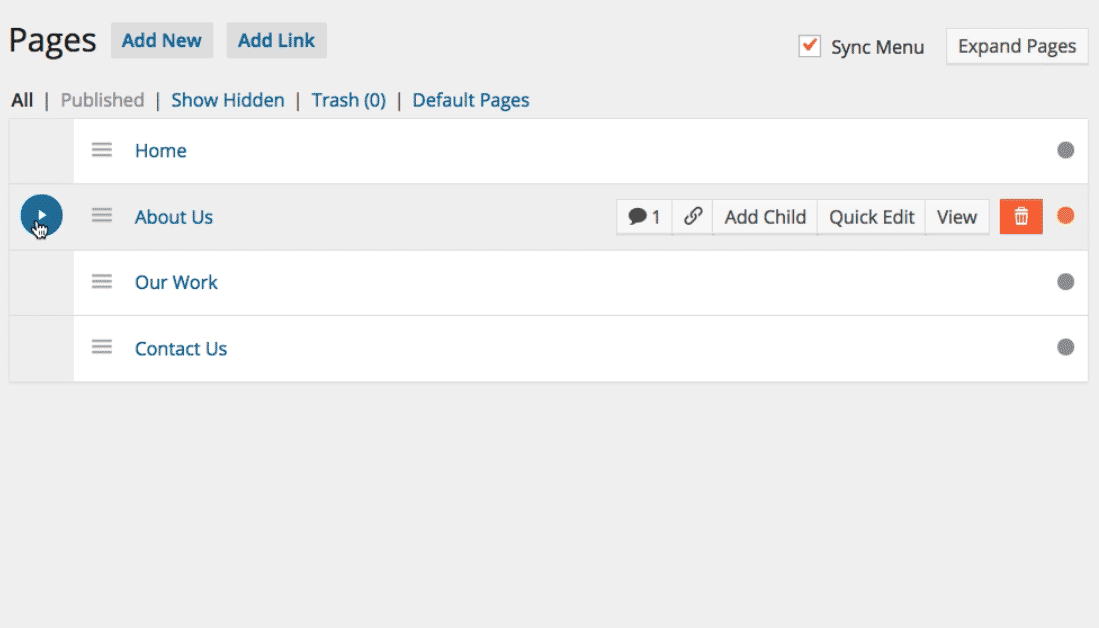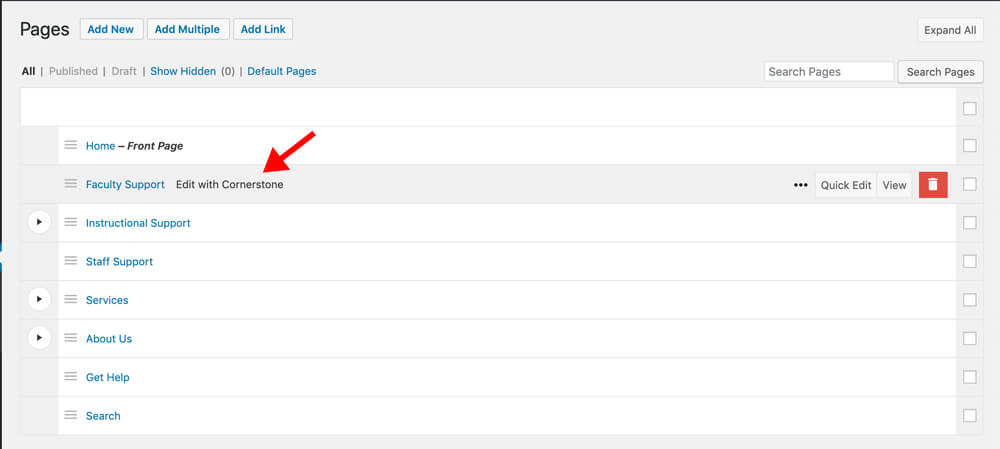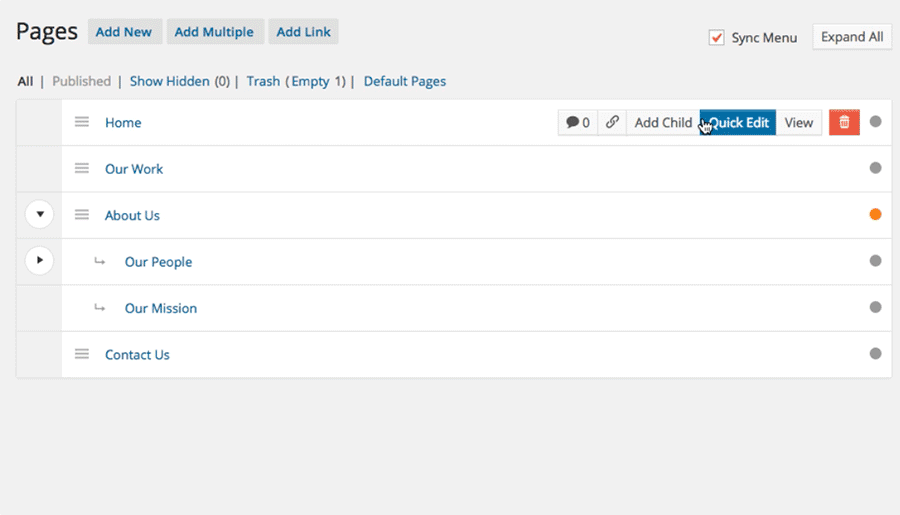How to Manage Your Site's Page Hierarchy
Overview
This tutorial will discuss how to Manage Your Sites Page Hierarchy. Topics included will be an overview of page hierarchy, creation of child pages, and management of existing relationships.
Pages within sites in the Viterbi Web Sphere are expected to be organized in a hierarchical manner. To make your pages hierarchical, you need to organize them with parent and child relationship. You create the broader page (top level) as a ‘Parent’ and then add child pages to better organize your website structure and layout.
For example, a parent page called ‘About us’ can have team members, history, careers, and other pages as child pages. Any child page can also have their own child pages and so on. This way you can build relationships between your pages and create a proper website structure.
Why is your site structure important?
- Usability: The structure of your site has a significant impact on the experience for your visitors.
- Search Engine Optimization: A solid site structure vastly improves your chances of ranking in search engines. Essentially, it just helps Google 'understand' your site.
- Management: Site content managers will know what pages belong together and how the information flows/is related.
How to Manage the Page Hierarchy:
Fully supported Viterbi sites offer the use of the plugin Nested Pages, which provides the following benefits:
- Provides a simple & intuitive drag and drop interface for managing your page structure and post ordering.
- Enhanced quick edit functionality.
- Adds an editable, sortable tree view of your site’s page structure.
- Automatically generates a native WordPress menu that matches your page structure.
- A way to quickly add multiple pages & posts (ideal for development).
- Works with any post type.
- Works on touch-enabled devices.
NOTE: Changing the parent/child relationship of pages also changes the pages' URL. For example, if we had a page titled "Our Mission" with the URL "https://viterbischool.usc.edu/our-mission/", and then made that page a child page of the "About Us" page (https://viterbischool.usc.edu/about-us/), the new URL for the "Our Mission" page would be "https://viterbischool.usc.edu/about-us/our-mission/".
Getting Started
Go to WP Dashboard > Pages, and you will see something similar to the following:
 Now, you have the ability to drag and drop pages within the interface to create the necessary Parent > Child relationship:
Now, you have the ability to drag and drop pages within the interface to create the necessary Parent > Child relationship:
 You can also access the Cornerstone visual page builder from this view by hovering over a given page and then clicking on the "Edit with Cornerstone" link:
You can also access the Cornerstone visual page builder from this view by hovering over a given page and then clicking on the "Edit with Cornerstone" link:
 Additionally, you can access some editable elements by clicking on the "Quick Edit" button on one of the pages, and you will have the ability to edit the page Title, slug etc:
Additionally, you can access some editable elements by clicking on the "Quick Edit" button on one of the pages, and you will have the ability to edit the page Title, slug etc:

Additional Technical Support:
If you need any assistance or have any question you can contact The Viterbi WordPress Development Team:
– Submit Requests via the Viterbi ServiceDesk within myViterbi.
– Submit a ticket via a webform at https://viterbi.usc.edu/servicedesk

